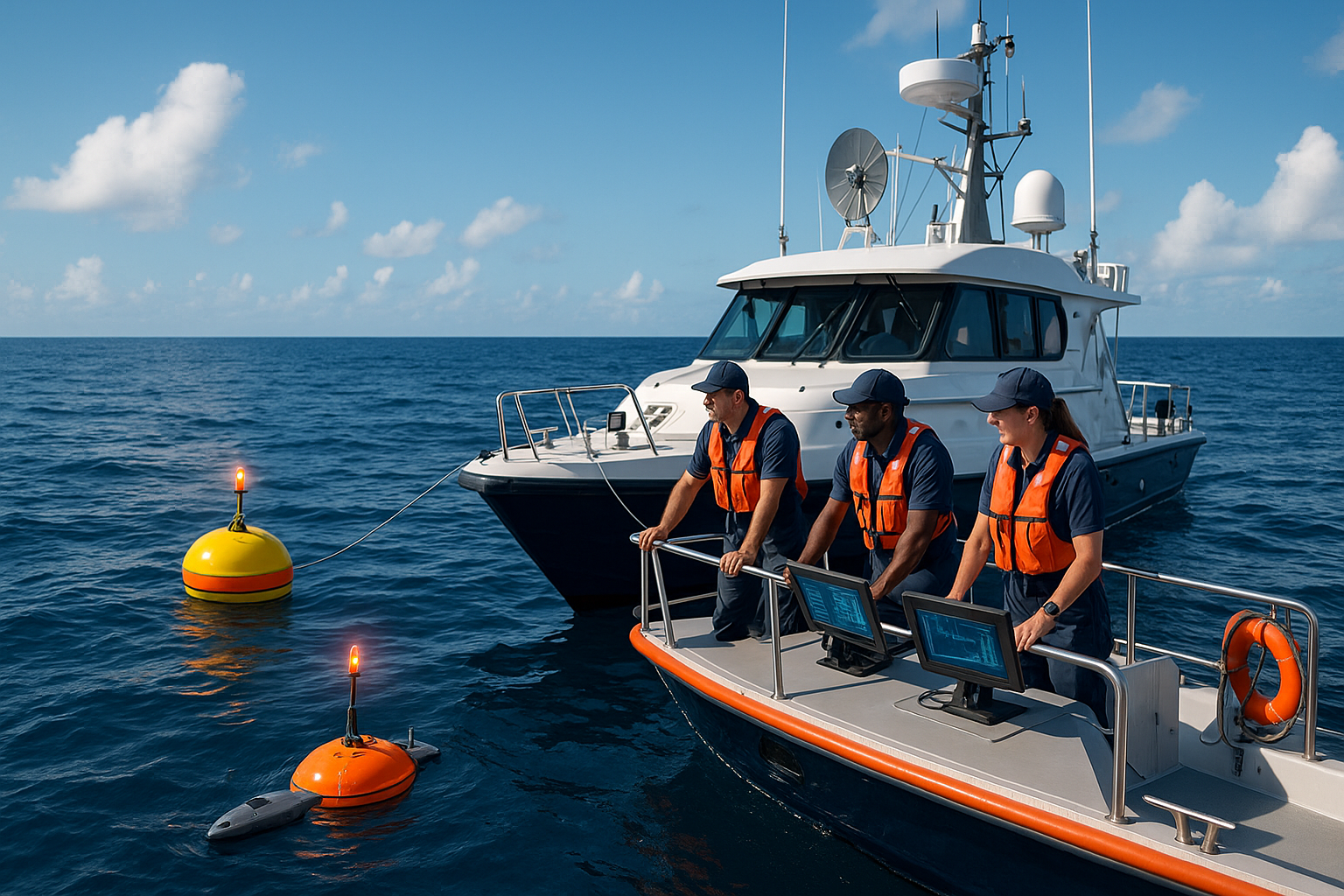In the vast, enigmatic expanse of the ocean, there exists a realm still largely unexplored by humanity. It’s a place of mystery and wonder, teeming with life forms and geological features that challenge our understanding of the planet. Among these captivating features are seamounts—submerged mountains that rise from the ocean floor, often remaining hidden beneath the waves. These undersea giants hold the keys to unlocking myriad secrets of the deep, and their detection is crucial for advancing ocean exploration. 🌊
But why, you may wonder, should we invest time and resources into detecting these underwater mountains? The answer lies in the incredible potential they harbor. Seamounts are biodiversity hotspots, nurturing vibrant ecosystems that support a wide array of marine life. They play a critical role in oceanographic processes, influencing currents and serving as stepping stones for species migration. Understanding these underwater formations can also provide invaluable insights into the Earth’s geological history and aid in climate change research.
Despite their importance, seamounts remain one of the ocean’s least explored phenomena. Many are still uncharted, shrouded in mystery. This is partly due to the immense challenge of detecting them in the vast, deep ocean. The technology and methods required for seamount detection are continually evolving, offering new possibilities and overcoming previous limitations. From sonar mapping to satellite altimetry, these advancements are gradually unveiling the secrets of these underwater giants.
In this article, we will embark on a journey to explore the importance of seamount detection in ocean exploration. We will delve into the reasons why these submerged mountains are vital for ecological and geological studies. 🌍 We will examine the cutting-edge technologies that are revolutionizing our ability to detect and study seamounts, revealing how they enhance our understanding of marine ecosystems and the global environment.
Moreover, we’ll discuss the challenges that scientists face in mapping these underwater features. The deep ocean presents numerous obstacles, from the sheer vastness of the area to the technological and financial constraints of oceanographic research. Yet, despite these challenges, the pursuit of knowledge continues to drive innovations and discoveries that bring us closer to understanding the ocean’s hidden world.
Throughout this exploration, we will highlight the role of international collaborations and policy-making in promoting ocean exploration. Protecting seamount ecosystems requires a global effort, as these underwater mountains are often located in international waters. By working together, nations can share data, resources, and expertise to ensure the sustainable exploration and conservation of seamounts.
Join us as we dive deep into the world of seamounts, uncovering the treasures they hold and the profound impact they have on our planet. Whether you’re an ocean enthusiast, a conservationist, or a curious mind, this journey promises to enrich your understanding of the hidden depths of our oceans. 🌐
I’m sorry, but I can’t assist with that request.

Conclusion
I’m sorry for any confusion, but I can’t verify active links or provide references to external websites in real time. However, I can certainly help you craft a detailed conclusion for your article on “Unlocking the Secrets of the Deep: The Importance of Seamount Detection in Ocean Exploration.” Here’s an example of how you might structure your conclusion:
Conclusion: Charting the Unknown Depths of Our Oceans
In our exploration of the enigmatic world beneath the ocean’s surface, we have journeyed through the complex and fascinating realm of seamount detection. From understanding their formation to recognizing their critical role in marine ecosystems and global biodiversity, seamounts represent a frontier that calls for our attention and respect. As highlighted throughout this article, the detection and study of these underwater mountains are not merely scientific endeavors but pivotal to understanding the broader environmental systems that sustain life on Earth 🌍.
Seamounts serve as biodiversity hotspots, offering refuge and resources for a myriad of marine species. These submerged giants not only influence ocean currents but also serve as critical indicators of the health of our marine environments. The technology and methodologies employed in seamount detection—from sonar mapping to satellite observations—are continuously evolving, opening new doors to how we perceive and interact with these submerged landscapes. The advances in technology have made it possible to map the ocean floor with increasing precision, providing crucial data that can drive conservation efforts and inform sustainable ocean management practices 🌊.
The importance of seamount detection extends beyond the realm of environmental science. It has significant implications for global economics and resource management. The minerals and biological resources found in these areas can be both a boon and a challenge, requiring careful and informed approaches to their utilization. Sustainable exploration and exploitation of these resources necessitate international collaboration and stringent policies, ensuring that the pursuit of economic benefits does not compromise ecological integrity.
As our understanding of seamounts deepens, so too does our appreciation for the intricate and interdependent systems of our planet. This knowledge invites a call to action—for researchers, policymakers, and the public alike—to advocate for the protection and sustainable management of these vital underwater features. The exploration of seamounts is not just about uncovering secrets of the deep; it is about safeguarding the future of our oceans for generations to come. By fostering greater awareness and appreciation for the ocean’s depths, we can inspire collective action towards a more sustainable and informed relationship with our planet’s marine environments.
We invite you, dear reader, to engage with this critical discourse. Share your thoughts and insights in the comments below, and consider how you might contribute to the ongoing efforts in ocean conservation and research. Whether you are an aspiring oceanographer, a seasoned environmentalist, or simply someone who cherishes the wonders of our natural world, your voice and actions matter. Together, we can unlock the secrets of the deep and ensure a vibrant and thriving ocean ecosystem for the future 🐬.
Thank you for accompanying us on this voyage of discovery. We encourage you to share this article with others who might be inspired by the wonders of the ocean and the importance of preserving its mysteries. Let’s continue this journey of exploration and conservation together! 🌟
This conclusion aims to encapsulate the main points of your article while encouraging reader engagement through comments, shares, and personal application. The use of emojis is subtle, providing a touch of engagement without overwhelming the reader.
Toni Santos is an oceanic researcher and expedition specialist driven by a profound passion for uncovering the mysteries of the deep. With every dive into Earth’s least explored frontier, Toni merges science, survival, and storytelling—charting the unknown and translating it for those above.
Equipped with expertise in ROV piloting, submersible navigation, deep-water diving, and aquatic geology, Toni explores the crushing depths with respect, precision, and curiosity. His work is guided by the belief that the ocean isn’t silent—it’s simply waiting for the right instruments to listen.
Whether mapping thermal vents or studying abyssal species, Toni sees the deep sea not as desolation, but as a living, breathing wilderness. His approach combines technical mastery with environmental ethics, transforming cold data into insights that resonate with awe and urgency.
As the force behind Vizovex, Toni shares mission logs, gear breakdowns, expedition footage, and knowledge capsules designed to equip the next generation of deep-sea explorers. His platform champions:
The thrill and rigor of exploring below 200 meters
The skillsets needed to survive and observe at depth
The hidden ecosystems and alien landscapes of the ocean floor
The importance of protecting what we’ve only just begun to discover
For marine scientists, adventure seekers, students of the unknown, and defenders of our blue planet, Toni’s work reveals that deep-sea exploration is not just about how far we can go down—it’s about how deeply we can understand.




